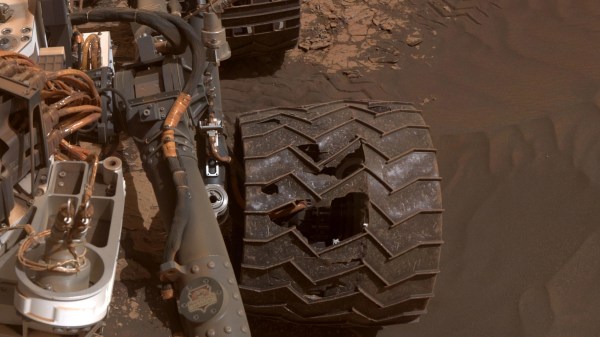Imagine the scene: You’re puttering along in your vehicle when, at least an hour from the nearest help, one of your tires starts losing air. Not to worry! You’ve got a spare tire along with the tools and knowhow to change it. And if that fails, you can call roadside assistance. But what if your car isn’t a car, has metal wheels for which no spares are available, and the nearest help is 200 million miles away? You just might be a Jet Propulsion Laboratory Engineer on the Curiosity Mars Rover mission, who in 2017 was charged with creating a new driving algorithm designed to extend the life of the wheels.

You could say that the Curiosity Mars rover is the ultimate off-road vehicle, and as such it has to deal with conditions that are in some ways not that different from some locations here on Earth. Earth bound rock crawlers use long travel suspensions, specialized drivetrains, and locking differentials to keep the tires on the ground and prevent a loss of traction.
On Mars, sand and rocks dominate the landscape, and a rover must navigate around the worst of it. It’s inevitable that, just like a terrestrial off-roader, the Mars rovers will spin a tire now and then when a wheel loses traction. The Mars rovers also have a specialized drivetrain and long travel suspensions. They don’t employ differentials, though, so how are they to prevent a loss of traction and the damaging wheel spin that ensues? This where the aforementioned traction control algorithm comes in.
By controlling the rotation of the wheels with less traction, they can still contribute to the motion of the vehicle while avoiding rock rash. Be sure to check out the excellent article at JPL’s website for a full explanation of their methodology and the added benefits of uploading new traction control algorithms from 200 million miles away! No doubt the Perseverance Mars rover has also benefited from this research.
But why should NASA get to have all the fun? You can join them by 3d printing your own Mars rover and just maybe some Power Wheels derived traction control. What fun!













